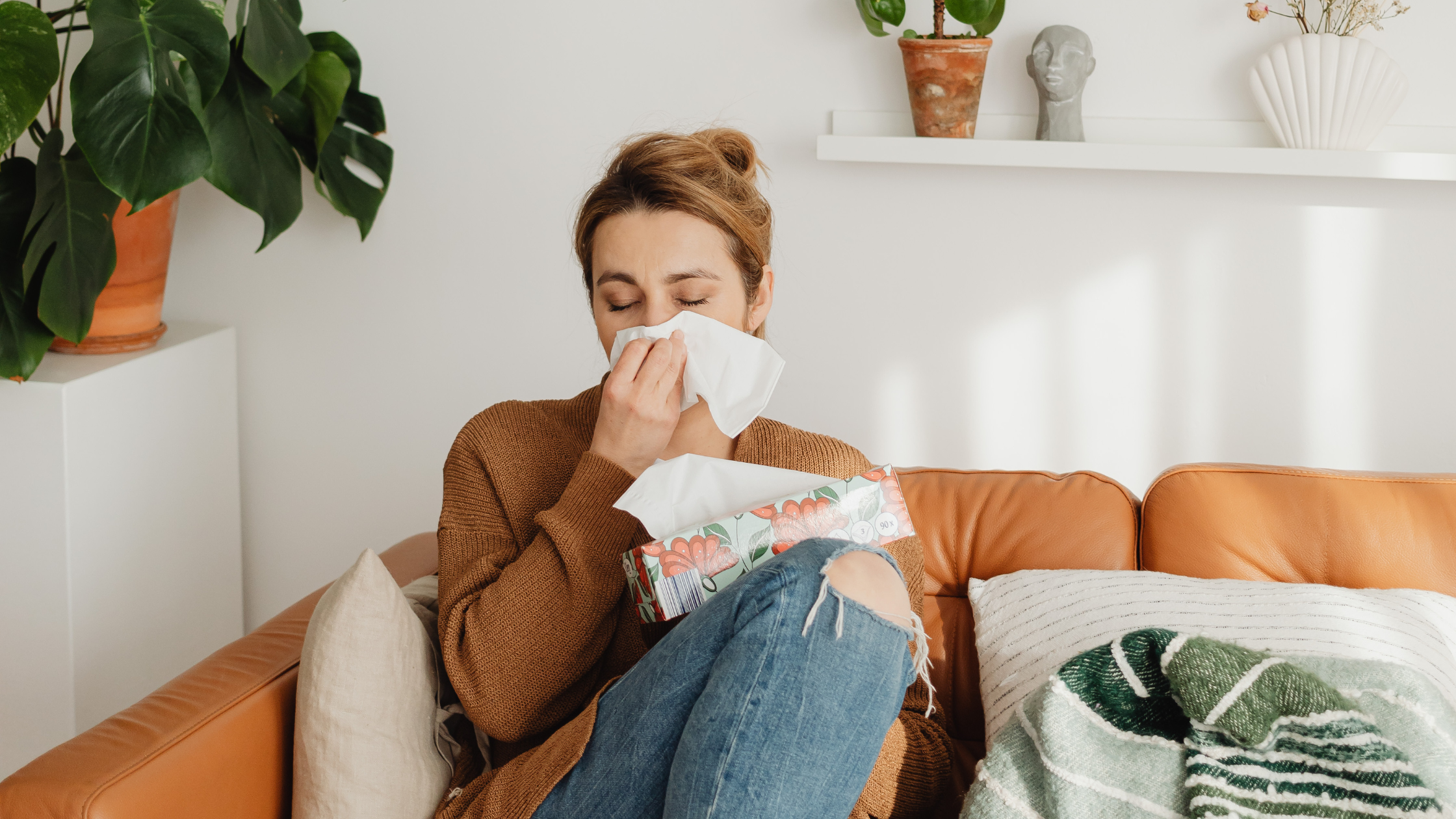
Allergic rhinitis can affect up to one fifth of adults in the US, and it's probably more common in childhood. It is caused by a sensitivity to allergens that can include dust mites, pet dander, pollen, mold, and allergic rhinitis. All of these can have a negative impact on one sleep and quality of life. Continue reading to learn more about how chronic rhinitis and allergens can negatively impact sleep, and what you can do about it to get a good night's rest.
Why allergies are worse at night
People who have allergies normally are exposed to something that triggers their attacks. These can include substances like the ones listed above, that irritate the nasal passages and can lead to some uncomfortable symptoms. Examples of these symptoms include runny nose, watery eyes, sneezing, and itchiness of the mouth and other sensitive areas. These common irritants can be found in the bedroom, especially in bedding. Pillows and bedspreads are harboring areas for pet dander, which can lead to an allergy flare up when you're lying down at night period to avoid this, it's going to be very important to wash your bedding frequently, especially if you have pets.
Nasal congestion is often worse at night and allergy medication can affect sleep. As a result, those with allergies often struggle with insomnia, which is the inability to sleep due to a known or unknown cause. The known cause here are allergies, which cause nighttime awakenings and daytime sleepiness. Those who struggle with allergies are also at increased risk for other conditions such as sleep related breathing disorders (obstructive sleep apnea).
The most common allergies that affect sleep
Dust mites
These are the most common. They are a household allergen and is one of the first allergies to appear in young children. These are tiny creatures that feed on dead skin cells that are found around mattresses, pillows, and box springs. A buildup of dust can lead to dust mite allergies and can occur at any point in the year. Managing dust mites includes replacing furniture and accessories that harbor dust. Bedding, curtains, wood surfaces, are all breeding grounds for dust mites and need to be cleaned regularly to avoid the build up. Dusting your home regularly and washing these materials can help prevent that build up.
Pollen
This is another common allergy. Hay fever is caused by a reaction from pollen that is released by trees, grass, and weeds. These allergies tend to be seasonal, with most people experiencing symptoms during certain parts of the year with reduced sleep quality. Spring, late summer, early fall are the most common times for allergy flare ups for the majority of individuals. Closing windows, changing clothes when you come inside, and drying clothes inside can be some of the best ways to avoid pollen allergies at night.
Mold
Another common allergy trigger, it fluctuates with seasons because mold grows better in the cold and damp. Therefore the best way to avoid mold in your house is to reduce the humidity in your house. Bathrooms need to be well ventilated because mold can grow after showers and baths. Without good bands or even a window, you can still help reduce the growth of mold by wiping down wet surfaces and making sure the shower curtain dries fully. Using a dehumidifier or turning up the heat in the home may also help reduce the amount of mold from these humid sources.
If you do see mold, it's essential that you clean it up expeditiously to keep your allergies at Bay. Look around wet surfaces, including sinks, shower curtains, refrigerator trays etc. To remove mold from your home.
Pet dander
Those who have household pets are at increased risk for developing allergies. Pet dander from their skin and saliva can trigger year round allergies. Those who share beds with their pets are at increased vulnerability of developing issues so it may be best for your pet to sleep in their own area. Pet danger is spread best by direct contact, so after petting your animal it's important to not rub your face in any capacity, and wash your hands immediately. There are opportunities to buy hypoallergenic animals, the ones that do not shed their fur.
Cockroaches
Proteins found in cockroaches have also been known to trigger allergy symptoms similar to hay fever. These proteins are present in the body, saliva, and the waste, which means that they can still cause allergies even after the death of the cockroach. It's important to maintain strict hygiene to keep these pests out of your home. Regularly cleaning your home, aerating damp spaces, sealing off garbage cans, and never leaving dirty dishes or food around are a great way to keep these pests at bay.
Household products and cigarette smoke
Household products and cigarette smoke are two other causes of allergies. Cleaning products or pest control can trigger allergies. If you're going to do a deep clean, it may be best to use more natural products to avoid be sensitivity issues. Even things like candles can trigger allergies and very sensitive people. Therefore if you know this signs and symptoms of allergies after introducing something new into your home, removing it may solve your allergy issues. Cigarette smoke absolutely causes allergies and those who smoke it and in those who are around them. Not smoking at all is the best way to improve your allergies, but smoking outside the home can really improve ones allergies who does not smoke.
If you are struggling with sleeping and think that it may be due to allergic rhinitis, then please click the orange button below to talk with the sleep health expert today who can help you identify potential causes of sleep disruption.
https://www.sleepfoundation.org/allergies-and-sleep/allergens-that-impact-sleep

